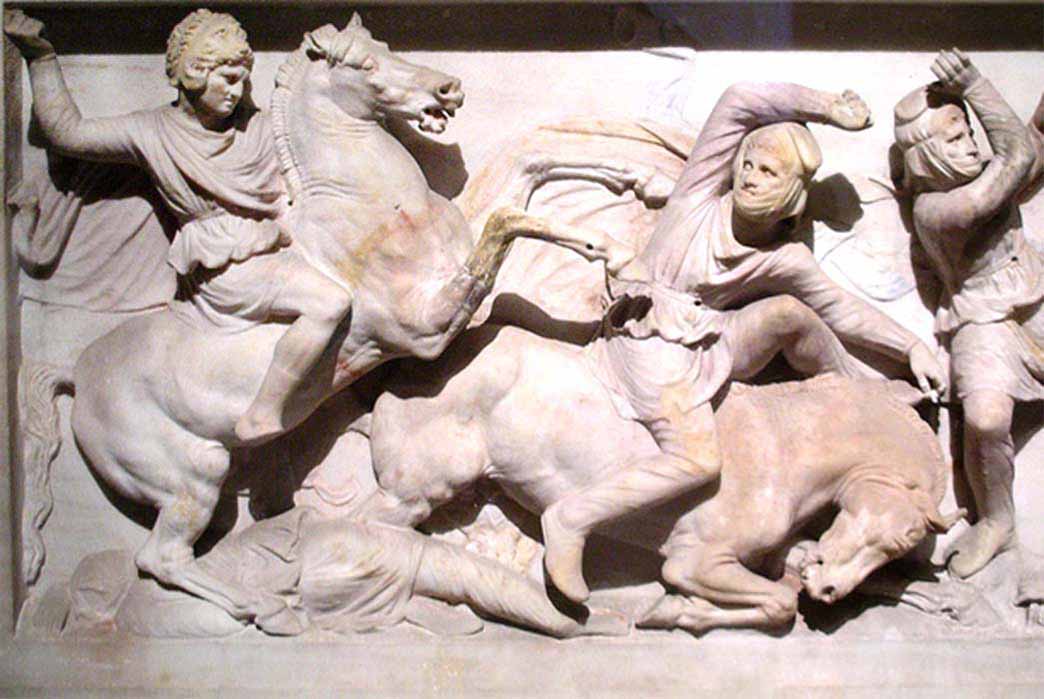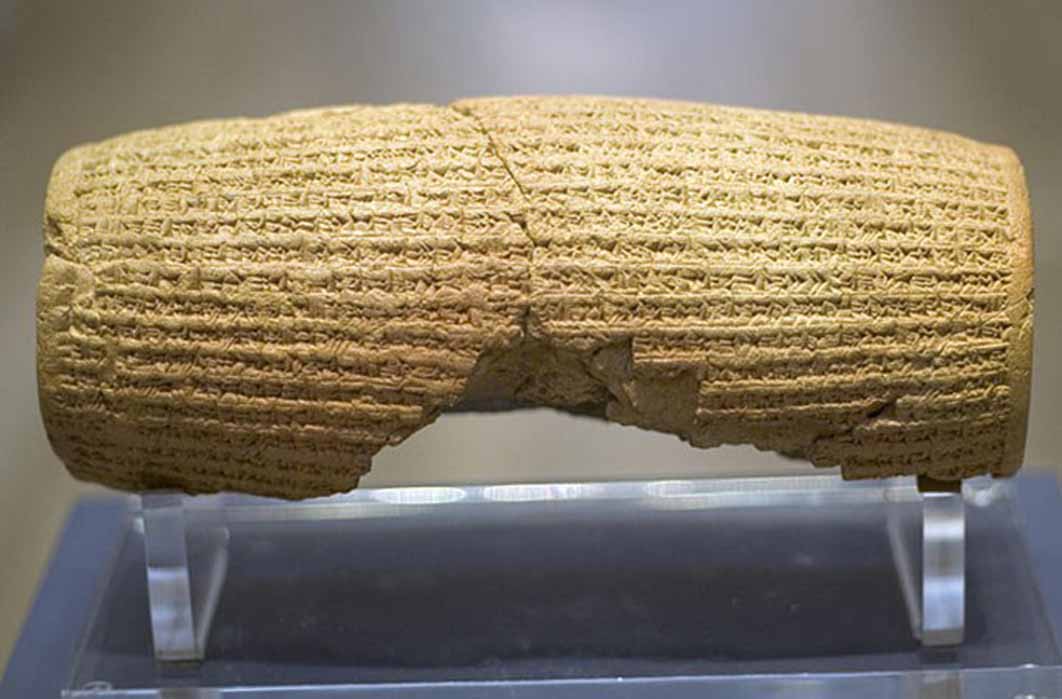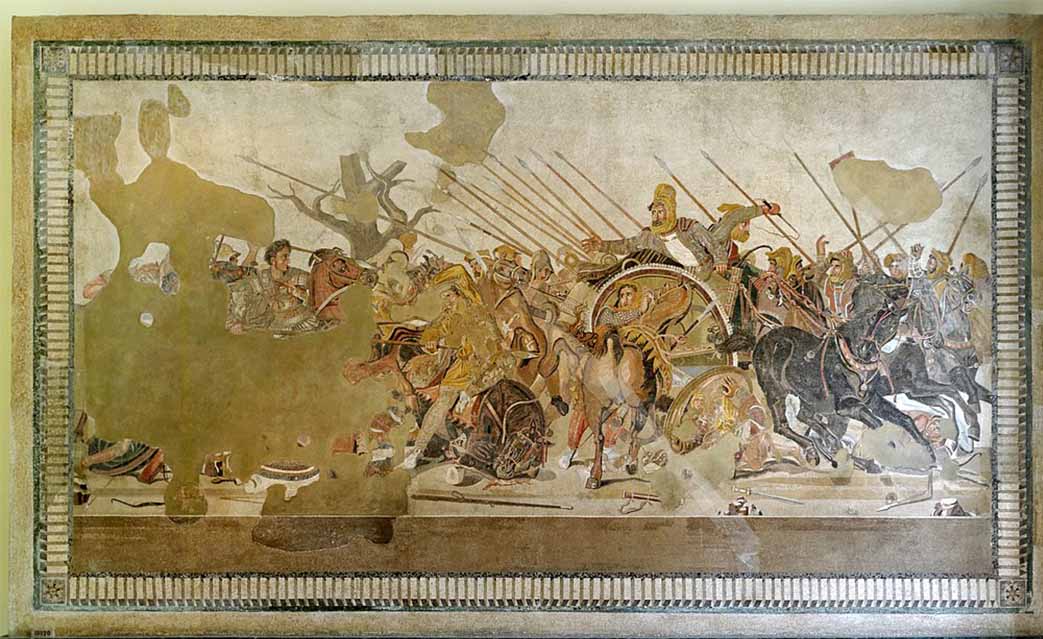
Alexander Of Macedon And His Nemesis Persian Darius III
Ironically, Xenophon’s Cyropaedia, written around 370 BC, a narrative describing the education of the ideal ruler centred on Cyrus the Great founder of the Achaemenid Dynasty, was a great inspiration to Alexander of Macedon who 40 years later, would become the conqueror of that same Persian dynasty, and was bestowed upon the title ‘The Great’.
Historical Overview Of the Achaemenid Dynasty
The Achaemenid Empire was the first and one of the most important Persian empires in the ancient world. This empire was founded around the middle of the sixth century BC by Cyrus II, the Great (559 – 530 BC). In 550 BC, the Medes and the Persians were unified by Cyrus. He expanded westwards, defeating Croesus, the King of Lydia, in 546 BC, thereby adding the western part of Anatolia to his growing empire. To the east, he conquered the Neo-Babylonian Empire in 539 BC and turned it into a Persian province. Cyrus envisioned a multi-cultural state with freedom of ownership, and tolerance of customs and religion, he appointed satraps to rule and he was hailed by those whom he conquered. The Cyrus Cylinder (539 BC) – sometimes referred to as the first Bill of Human Rights, discovered in Babylon in 1879 - described the repatriation of exiled peoples, among them the Israelites who were allowed to return to Jerusalem. Xenophon wrote: “Cyrus eclipsed all other monarchs, either before him, or since.” Xenophon did not calculate the ambitions of Alexander of Macedon.

The Cyrus Cylinder. ( Creative Commons )
Herodotus’ The Histories (440 BC) is a primary source of information on the early period of the Achaemenid era (648–330 BC) and refers to Zoroastrianism. The Achaemenid rulers were followers of Zoroastrianism, the roots of which are to be found in a common prehistoric Indo-Iranian religious system dating back to the early second millennium BC. Cyrus the Great’s reforms reflect the basic principles of Zoroastrianism of free will and tolerance of religions. The prophet Zoroaster is dated by some scholars to be a seventh – sixth-century BC contemporary of Cyrus the Great or Darius the Great. Zoroastrianism exalts an uncreated and benevolent deity of wisdom known as Ahura Mazda as its supreme being.
The Achaemenid Empire was further expanded by Cyrus’ descendants and successors. His son Cambyses II, (529 - 522 BC) conquered Egypt, Nubia, and Cyrenaica, but it was during the reign of Darius I the Great (521 - 486 BC) that the Achaemenid Empire reached its greatest territorial extent. Darius I declared in his inscriptions that his empire included “many peoples of many tongues.” The King and his court occupied four seasonal capital cities: Susa in the Fall, Babylon in the Winter, Ecbatana in Summer and Persepolis was used in Spring for the Nowruz or New Year festivals. The pas-de-deux between Alexander and Darius III plays against the backdrop of these cities.
Enter the Greeks
Xerxes I the Great (485-465 BC) launched the massive invasion of Greece, marked by the battles of Thermopylae against the 300 Spartans, led by King Leonidas and the battles of Salamis, and Plataea. Xerxes was defeated, but the Greeks held a grudge.
- Xerxes The Great: The Powerful Persian King Whose Death Destroyed an Empire
- Battle of Gaugamela: Alexander the Great Thrashes the Achaemenids
- Alexander the Great Destroyer? The Sacking of Persepolis and The Business of War
King Philip II of Macedon entertained Persian noblemen, exiles and opponents of Artaxerxes III at his court. Crown prince Alexander, born in 356 BC, would have mingled with these Persians and learnt their customs as part of his education. After uniting most of Greece, Philip planned a campaign against the Persians to address the grievances and invasions the Greeks had suffered since 480 BC , and he had received pleas from Greek cities on the western coast and islands, as well as from Greeks within Persia to free them from Achaemenid rule, however before he could embark on this campaign, he was murdered in 336 BC and his throne passed on to his son, Alexander.
In the east, in the same year 336 BC, a new king ascended the throne of Persia. Darius III was a distant member of the Achaemenid Dynasty. He was the son of a certain Arsames, and grandson of Ostanes, whose father Darius II ruled the Achaemenid Empire from 424 BC to 405 BC. So, he was the great-great-great grandson of Darius II. He was known as Artashata and due to his military success, he was given the Satrapy of Armenia by King Artaxerxes III and he carried the Aramaic name Codomannus. After the death of Artaxerxes III and his son Artaxerxes IV Arses, who were both poisoned by the eunuch Bagoas in 336 BC, Artashata – being of royal descent and acceptable to the aristocracy, stepped into the succession void and managed to find himself on the throne of the mightiest empire. From then on he called himself Darius III.





